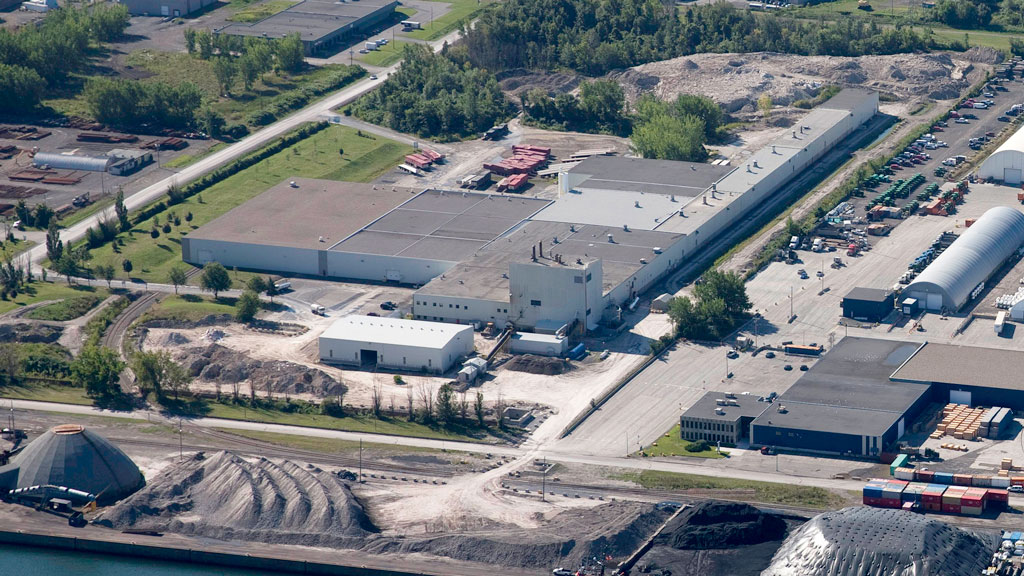Saint-Gobain is investing $91 million at its sprawling CertainTeed drywall manufacturing facility near Montreal to increase production capacity by 40 per cent and transform it into the first carbon-neutral drywall plant in North America.
The retrofit is expected to reduce carbon emissions at the plant by up to 44,000 metric tonnes per year – equivalent to removing 9,500 cars from the road – and reduce energy usage by up to 30 per cent.
Equipment that is powered by fossil fuels will be switched out to machines powered by renewable electricity from Hydro-Québec.
It is expected to be one of the most energy-efficient drywall plants in the world.
The project is being launched because of unprecedented customer demand and calls for more sustainable industry solutions.
The plant serves customers in Quebec, Atlantic Canada and eastern Ontario.
“It’s the right thing to do for a number of reasons,” explains Dennis Wilson, vice-president of environmental, social, governance North America and managing-director, Saint-Gobain circular economy solutions.
“It’s really consistent with our overall purpose as a company of making the world a better home.”
“We see ourselves as a key player in the fight against climate change. We see a lot of customer demand these days for products that have lower carbon embodied in them and this is a great way to be able to get there from an operations perspective, so we’re doing everything we can to move in this direction.”
Saint-Gobain, which has 166,000 employees and locations in 75 countries, has committed to reducing its CO2 emissions by 33 per cent by 2030 compared to 2017, with the aim of becoming carbon neutral by 2050.
“The electrification of our Montreal plant is a massive step forward in our broader goal to decarbonize construction materials and a significant step towards our global goal of carbon neutrality by 2050,” says Wilson.
He notes globally about 40 per cent of CO2 emissions are attributed to the construction industry and Saint-Gobain has a role to play in moving the needle on sustainability.
“To me, it’s a kind of challenge that’s unified our company.”
The company chose the target date of 2050 so it can embrace future technological developments.
“We have a lot of processes that are energy intensive and we need changes in technology and we need changes in fuels,” says Wilson. “There’s a large transition that needs to happen in the global economy at large that helps us get there.
“Projects like this are an example of what we’d like to do everywhere where it’s possible. We would hope to be there sooner. I think any company would, but that’s where the goalposts are.”
The retrofit is scheduled to begin next summer and will involve some modest design changes to the footprint of the existing plant. The new equipment is scheduled to come online in late 2024.
“The planning is mostly done. It’s the moving toward equipment order and exactly how this is going to operate,” says Wilson.
The project is supported by a $40-million contribution from the Quebec government via its EcoPerformance program. The upgrades are the culmination of nearly two years of project design, engineering and planning by the company’s sustainability, engineering and operations teams in Canada, the United States, the United Kingdom and France.
The plant, which originally began operations in the early 1970s, is on 15 hectares of land along the St. Lawrence River in Ville Sainte-Catherine. Approximately 120 workers are employed there. The project will result in several more full-time jobs.
It is the second carbon neutral drywall manufacturing plant to be launched by Saint-Gobain. The company has another project in Norway which is expected to be operational in early 2023.
Wilson says the bulk of the retrofit at the Montreal plant involves switching to machinery and equipment that can run on green energy.
“Those pieces of equipment that would have been powered by fossil fuels are being electrified and replaced with electric equipment. Things like dryers that used to run on fossil fuel, natural gas, are now being switched over to electric.
“We’re going with the electric version of what we did previously and along the way these pieces of equipment are more efficient than the pieces we took out, so it’s double bang for your buck.”
According to Wilson, all of the company’s businesses have road maps to help them get to carbon neutrality by 2050. For example, heat recovery projects were announced for a plant in Vancouver that will reduce CO2 emissions.
The company’s global plan includes not only carbon, but water and waste reduction.
“It includes getting to circularity with a lot of our products as much as possible and preventing them from being put in landfills and keeping them at a high value as raw materials,” Wilson says.
He notes teams within the company are all working towards the common goal.
“We see climate change as a completely existential issue and we feel like we’re doing very substantive things to work towards solutions of those issues.”



Recent Comments
comments for this post are closed